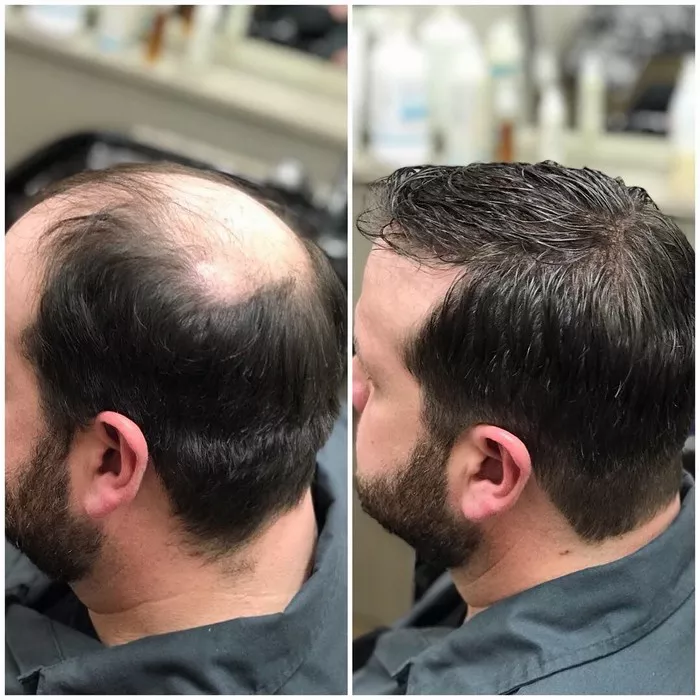Hair loss can be a distressing experience for both men and women, impacting self-esteem and confidence. Fortunately, advancements in medical technology have made hair transplant procedures an effective solution for restoring natural hair growth. Hair transplant surgery involves transferring hair follicles from areas of the scalp with healthy hair growth to areas experiencing thinning or baldness. In this article, we will explore how hair transplant works, the different techniques involved, and the benefits it offers to individuals seeking a long-term solution to their hair loss concerns.
Understanding Hair Loss
Before delving into the details of hair transplant surgery, it is important to understand the underlying causes of hair loss. The most common cause of hair loss in both men and women is androgenetic alopecia, also known as pattern baldness. This condition is hereditary and occurs due to the sensitivity of hair follicles to dihydrotestosterone (DHT), a hormone that leads to the shrinking of hair follicles and eventual cessation of hair growth.
Hair transplant surgery is typically recommended for individuals with pattern baldness or those experiencing hair thinning due to other causes such as trauma, burns, or certain medical conditions.
The Hair Transplant Procedure
Hair transplant surgery involves the following key steps:
1. Consultation and Assessment
The first step in the hair transplant process is to consult with a qualified and experienced hair transplant surgeon. During this consultation, the surgeon will assess the extent of hair loss, determine the availability of donor hair, and discuss the individual’s expectations and desired outcome. A thorough examination of the scalp will help the surgeon determine the most suitable technique for the individual.
2. Donor Hair Harvesting
The next step is the harvesting of donor hair follicles, which are typically taken from the back or sides of the scalp. These areas are genetically resistant to DHT and therefore serve as an ideal source of healthy hair follicles for transplantation. The two primary techniques for donor hair harvesting are:
a. Follicular Unit Transplantation (FUT)
In FUT, a strip of skin containing hair follicles is surgically removed from the donor area. The surgeon then sutures the incision, leaving a thin scar that can be concealed by surrounding hair. The strip is dissected under a microscope, separating individual follicular units, which consist of one to four hairs each. These follicular units are then transplanted into the recipient area.
b. Follicular Unit Extraction (FUE)
FUE involves the extraction of individual hair follicles directly from the donor area using a small, specialized instrument. The surgeon carefully selects and removes individual follicular units, leaving tiny puncture wounds that heal without noticeable scarring. The extracted follicular units are then transplanted into the recipient area.
3. Recipient Site Creation
Once the donor hair follicles are harvested, the surgeon creates recipient sites in the bald or thinning areas of the scalp. These sites are meticulously designed to ensure natural-looking hair growth and proper spacing between the transplanted follicles. The surgeon takes into consideration the angle, direction, and density of the existing hair to achieve optimal results.
4. Hair Follicle Transplantation
Using fine needles or micro blades, the surgeon carefully implants the harvested hair follicles into the recipient sites. The follicles are placed in a manner that matches the natural hair growth pattern and aesthetic goals of the individual. The surgeon may transplant a varying number of follicular units, depending on the extent of hair loss and the desired outcome.
5. Postoperative Care and Recovery
After the hair transplant procedure is complete, the individual will receive instructions on postoperative care and recovery. It is common to experience some swelling, redness, and mild discomfort in the first few days following the surgery. The surgeon may prescribe pain medications and antibiotics to prevent infection. It is important to follow the postoperative instructions carefully and attend scheduled follow-up appointments to monitor progress and ensure optimal healing.
Benefits of Hair Transplant
Hair transplant surgery offers several benefits to individuals seeking a permanent solution to their hair loss concerns:
1. Natural-Looking Results
Hair transplant surgery provides natural-looking results because the transplanted hair follicles are taken from the individual’s own scalp. The surgeon carefully designs the recipient sites and places the follicles in a manner that mimics the natural hair growth pattern, ensuring a seamless and aesthetically pleasing outcome.
2. Permanent Solution
One of the most significant advantages of hair transplant surgery is that it offers a permanent solution to hair loss. The transplanted hair follicles are genetically resistant to DHT, meaning they are not affected by the hormone responsible for pattern baldness. As a result, the transplanted hair continues to grow naturally and does not fall out.
3. Improved Self-Esteem and Confidence
Hair loss can have a profound impact on an individual’s self-esteem and confidence. By restoring natural hair growth, hair transplant surgery helps individuals regain their self-confidence, improve their overall appearance, and feel more positive about themselves.
4. Low Maintenance
Once the transplanted hair follicles have fully healed, they require no special maintenance. Individuals can treat the transplanted hair just like their natural hair, including washing, styling, and cutting. The transplanted hair will grow and shed like regular hair, ensuring a hassle-free experience.
Conclusion
Hair transplant surgery is an effective and permanent solution for individuals experiencing hair loss due to pattern baldness or other causes. By harvesting healthy hair follicles from the donor area and transplanting them into the recipient area, hair transplant procedures can restore natural hair growth and improve self-esteem. With advancements in surgical techniques and experienced surgeons, individuals can achieve natural-looking results and enjoy a long-term solution to their hair loss concerns. If you are considering hair transplant surgery, consult with a qualified hair transplant surgeon to determine the most suitable technique and create a personalized treatment plan that addresses your specific needs and expectations.
Related topics:
- How long after hair transplant can I wear a hat: A Comprehensive Guide
- How long after hair transplant can I workout: A Full Guide
- How long to recover from hair transplant: A Quick Guide


